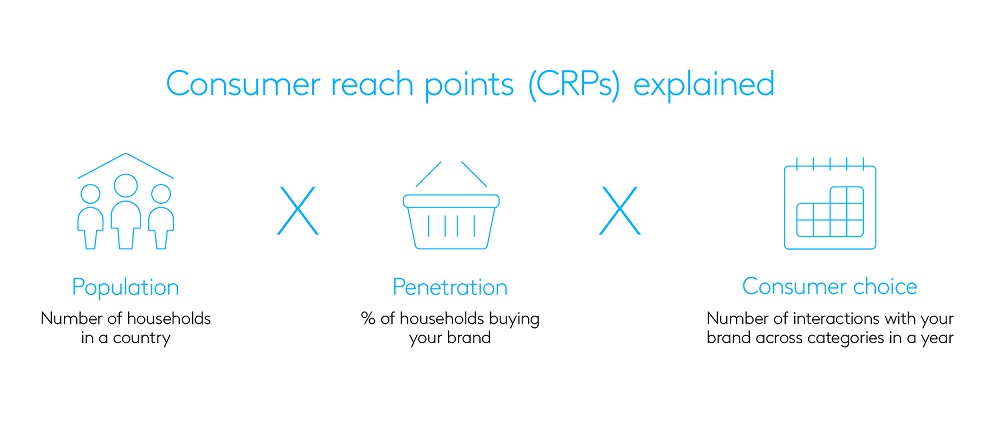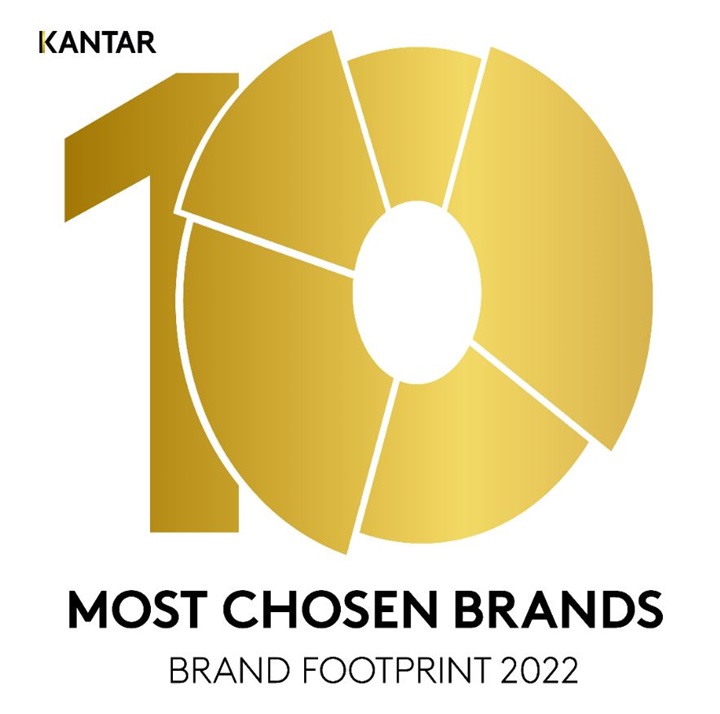The Brand Footprint ranking reveals how consumers around the world today are buying FMCG brands, as well as highlighting the opportunities for brands to increase their footprint.

Consumer Reach Points
The Consumer Reach Points of each brand is calculated by multiplying three numbers:
- Penetration
- Population
- Consumer Choice
The measurement is then weighted by actual population to calculate the brand’s reach. As well as a clear picture of the size of its global footprint, this reveals where the brand has opportunities to grow its penetration and its frequency.

While the number of occasions is the main driver of consumer choice, this alone fails to capture brands chosen for separate needs within a single trip—for example a brand present in both skincare and haircare. This won’t impact most brands but is important for any that cross multiple categories.
Methodology and criteria
The categories: the complete ranking comprises of six global FMCG sectors – beverages, food, dairy (and dairy alternatives), beauty and personal care, homecare and health and beauty – tracked by Kantar’s Worldpanel consumer panels. All data relates to purchases brought into the home to be used or consumed there.
The ‘universe’: The data collected covers 73% of the global population across 54 markets, and 89% of global GDP.
Now in its tenth year, Brand Footprint is our global study of which brands shoppers are choosing to buy, and why. The metric used for Brand Footprint is called Consumer Reach Points (CRP) and is calculated by looking at penetration and frequency in combination with the number of households in the country. Consumer Reach Points is the most comprehensive measure available of how many times a brand is chosen from retailers’ shelves. Data in this report covers the 52 weeks ending October 2021. For the first time this year we have included relevant dairy and dairy alternative brands in the food and beverages rankings
Data source: Brand Footprint is a Kantar initiative. Thanks to our partnerships we have been able to offer countries outside of the Kantar footprint. Data for Austria, Belgium, Czech Republic, Denmark, Germany, Hungary, Italy, Netherlands, Poland, Romania, Russia, Slovakia and Sweden was provided by GfK. Data for Australia and the USA was provided by IRI. Data for Japan was provided by Intage. Kantar in collaboration with CTR in China..

How to use Brand Footprint
This seal can be placed on your packaging, advertising, PR, social media as well as in your internal communications. Please get in touch if you wish to receive the artwork that corresponds to your ranking.
Brand Definition
Brand Footprint covers consumer brands; retailers’ own-label brands are not included. Brands listed include all variants, categories and formats that sit within them – for instance Pantene includes all of its shampoo, conditioner, hair treatment, hairspray and hair oil products.
Brands sold under different names in different countries are considered as individual brands – for instance Tide and Ace. However, for brands with a name that has been directly translated into a local language, for example Mr Muscle and Mr Músculo, both are counted as the same brand.
If a ‘master’ brand features the ‘manufacturer’s endorsement’ in the packaging, we consider the ‘daughter’ brands separately as their branding is most prominent. For instance, Special K from Kellogg’s or Cadbury’s Dairy Milk would be reported as individual brands.
Where a brand’s name contains the name of its manufacturer, it is considered to be part of the master brand. For instance, Heinz Soup, Heinz Mayonnaise and Heinz Tomato Sauce are all counted under Heinz, however Big Soup and 57 Sauces from Heinz are reported separately. This also applies to brands such as Bimbo, Ajinomoto, Nestlé or Danone.